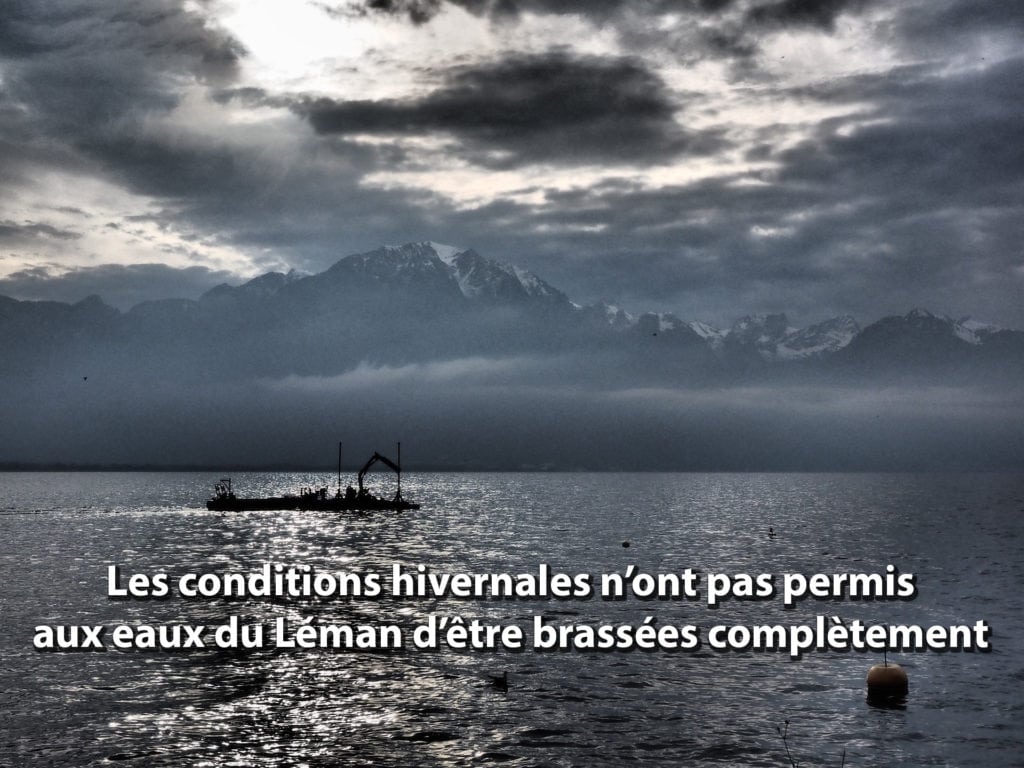12 years of incomplete mixing of the waters of Lake Geneva: what's at stake?
This winter, once again, the mixing of the waters of Lake Geneva was incomplete. Data from CIPEL, the International Commission for the Protection of the Waters of Lake Geneva, indicate a mixing depth of 100 meters, below the average of the last ten years. This winter's mild conditions allowed only partial mixing of the waters of Lake Geneva, keeping the oxygen concentration in the deeper layers at a level that gives cause for concern for the health of the lake's ecosystem.
This year, 2024, marks the 12th consecutive year in which the waters of Lake Geneva have not been completely stirred, the last being in 2012. Water mixing contributes to the lake's good ecological status by facilitating the transfer of oxygen to the deeper layers. The homogenization of water masses also enables nutrients accumulated at the bottom of the lake to be redistributed throughout the water column.
This winter, the conditions required for deep mixing were not present, and only the first 100 meters of Lake Geneva were able to mix effectively. By way of comparison, the average mixing depth for the years 2011 to 2023 was 150 meters. The cause was the rather high temperatures recorded this winter, particularly in February, when surface water temperatures were on average almost 2°C (+1.9°C) higher than during the reference period (1991-2020).
Outside the winter period, the lake is thermally stratified, preventing deep water from mixing with surface water. With the onset of winter, the surface water cools to a density comparable to that of the deeper layers, allowing mixing to take place. If the temperature of the surface layers drops sufficiently, the mixing, motivated by sufficiently strong winds, can mobilize the entire water mass, ensuring the homogenization of nutrients and oxygen throughout the water column. The movement of a large body of water, such as that of Lake Geneva, therefore depends on a conjunction of favorable meteorological events that occur only episodically.
Historically, the waters of Lake Geneva have mixed without necessarily involving the entire water column. The absence of complete mixing, also known as overturning, is therefore not a new phenomenon for Lake Geneva. However, a prolonged period of lack of mixing, such as that currently experienced by Lake Geneva, contributes to maintaining a state of hypoxia in the deep layers, leading to the formation of an oxygen-poor zone at the bottom of Lake Geneva. Previously limited to the last few meters of the water column (309 m maximum depth), this zone now extends at times down to 250 meters. This depletion of oxygen in deep waters is also associated with a gradual rise in temperature.
With rising winter temperatures, induced by global warming, the prospect of complete winter mixing on Lake Geneva is receding. An evolution towards a more stratified lake could lead to increased deoxygenation of the deep waters, with undesirable effects for the fauna living there. Other effects, such as the release of phosphorus from sediments, are also to be expected. In addition, an accumulation of phosphorus in the depths of Lake Geneva could lead to significant fertilization during the next upwelling and encourage algal growth, impacting water quality and bathing.
That's why it's vital to continue monitoring and tracking Lake Geneva, so we can meet the challenges of the future as climate change intensifies.









